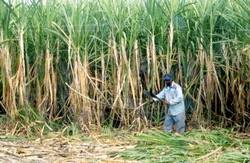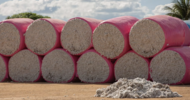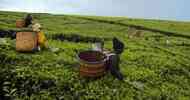The Philippine Star | 15 April 2012

By Emily Polack
MANILA, Philippines - Recent years have seen “land grabbing” emerge as a big issue in media across the world, with reporters quick to write about deals involving millions of hectares, particularly within Africa.
Yet large-scale land acquisitions are not a purely African phenomenon. Other parts of the world are also subject to the global land rush.
Home to emerging economies with profit potential, Southeast Asia has become ever more appealing to investors from both within and beyond the region seeking to include agriculture in their portfolios.
Regional agribusiness companies are booming. And rapid change in land ownership and use is already taking place. Set against a backdrop of insecure rights and weak land governance, land acquisitions are posing significant threats to local livelihoods and environments alike.
Since the turn of the century, Southeast Asia has increasingly come under the “investment spotlight,” attracting the interest of ever more private companies and individuals who see huge potential in the region’s emerging and “frontier” markets.
Between 2000 and 2010, foreign direct investment grew more than five-fold in Cambodia, from $149 million to $783 million. Neighboring Laos saw an even bigger growth – from $31 million in 2000 to $350 million in 2010.
Only a fraction of this money is aimed at agriculture, but it has been fast-growing: flows to agriculture, forest and fishing across the region increased by 66 percent between 2000 and 2005.
This rapid growth in agricultural investment has brought with it a significant increase in land acquisitions (even though not all such investment involves acquiring land).
Foreign investors
Recent analyses suggest that millions of hectares are being acquired by foreign investors in Southeast Asia. For example, official sources suggest that approximately one million hectares in Cambodia have been allocated to agriculture and tree plantation projects in the past 20 years, many of which are foreign. A number of other sources suggest the figures are considerably higher (over two million). In the Philippines, there have been reports of individual deals with investors of this size.
The European Union dominates the overall investor landscape, accounting for around one-fifth ($20.6 million) of total foreign direct investment flows into Southeast Asia between 2008 and 2010.
The figures for such flows to agriculture are less clear.? It is true that Western development funds have helped shape Southeast Asian economies and provided?markets for agricultural commodities. But in 2008, non-government organization GRAIN reported deals and potential deals for land in countries of the Association of Southeast Asian Nations (ASEAN) with the Gulf States, India, Japan and South Korea (although it is hard to find evidence of all of these deals manifesting on the ground, and some are known to have collapsed).
China is also a major player in agribusiness throughout Southeast Asia, but particularly in the Mekong region?– both as a market for agricultural goods as well as ?a source of investment.
Not all Chinese investment in agriculture involves land acquisitions. The country’s opium substitution policy, among others, has facilitated major rubber expansion in both Laos and Myanmar, and there are reports of substantial joint ventures for biofuels in the pipeline in the Philippines.
In some countries, China is among the top three investors. Indeed, China accounts for half of all foreign investments in agriculture in Laos and Chinese nationals account for about half of all foreign-owned land concessions in Cambodia.
Although investors from beyond the region’s borders are certainly significant, intra-ASEAN investment is rising fast. Exploiting the preferential access to regional markets created by proximity, economic integration and a range of regional trade initiatives, many of the region’s stronger countries have begun investing heavily in their neighbors. This includes investment by ASEAN-based transnational food and agriculture corporations.
The proportion of foreign direct investment that comes from within the region increased from just three percent in 2000 to more than 18 percent in 2008.
Thailand and Vietnam are both big investors in nearby Cambodia and Laos. Foreign investment accounts for more than three- quarters of the total approved investment in agriculture in Cambodia, with Thailand responsible for 22 percent. Much of this investment involves acquiring land. Indeed, foreign investment accounts for about a third (35 percent) of total area allocated to official land concessions.
Nationalelites
National elites also play a major role in agricultural ventures within individual countries. Alongside large joint deals with foreigners, land acquisitions by Cambodian nationals have risen dramatically over the past two decades. One senator is reported to own, or have interest in, more than 75,000 hectares of sugar concessions and agribusiness ventures.
Investors both within and beyond ASEAN have long-sought to expand the production of agricultural commodities, with crop booms in the region expanding at different times over the past century. But such investment is deemed increasingly lucrative and often more so through land acquisitions.
In some cases this means focusing on food crops. Many of the deals with Gulf States, for example, center on rice. But land acquisitions also involve non-food crops such as rubber and acacia. Indeed, in Cambodia just 22 percent of foreign acquired economic land concessions are for food production.
Commodity-specific drivers of land acquisitions across Southeast Asia include:
• Biofuels. Indonesia and Malaysia dominate the biofuel field, accounting for 87 percent of global production, based on extensive oil palm to supply rapidly growing markets (although oil palm expansion has equally been driven by demands of the global food industry).
Oil palm in the Philippines more than doubled in area between 2002 and 2010 (although this is not all concessions). Much of the demand for biofuels more broadly comes from overseas but most Southeast Asian countries are now planning to expand biofuels to meet their own national targets. Vietnam, for example, projects up to 100,000 hectares of plantations for biofuels by 2015.
• Biomass energy. Growing interest in tree plantations that can supply biomass energy plants is beginning to fuel demand for high quality land. Acquisitions by South Korean investors have been documented in both Cambodia (60,000 hectares) and Indonesia (more than 200,000 hectares).
• Rubber. Rubber production accounts for half of China’s foreign direct investment into the Mekong region. Indonesia, Malaysia and Thailand are?the world’s top three producers of rubber, with Cambodia, the Philippines and Vietnam all featuring in the top 20. Several ASEAN countries have set themselves targets for increasing rubber production. Myanmar, for example, plans to expand rubber plantations from 400,000 to 600,000 hectares by 2030. Laos also plans to expand rubber production, through a mix of large-scale land concessions and contract farming models with small-scale farmers.
• Sugar. Duty-free access to European markets for Least Developed Countries has stimulated large- scale land acquisitions in Cambodia and Laos for sugar production. In Cambodia, private companies have been allocated 80,000 hectares to produce sugarcane. And Thai company Khon Kaen Sugar has been awarded a 90-year lease for 20,000 hectares along the Cambodia-Thailand border, and a 30-year lease for 10,000 hectares in Laos.
Most land acquisitions for these commodities come as leases or concessions, which are negotiated by governments. In many countries, they are facilitated by policy instruments, such as Cambodia’s Economic Land Concessions, which enables the government to lease large tracts of land, for up to 99 years, to private companies for plantations and large-scale agriculture.
As elsewhere, agricultural projects are far from the sole source of pressure on farmland in Southeast Asia. A growing number of investors are also looking to exploit new carbon market opportunities.

Most Southeast Asian countries face the usual competing interests of mineral extraction, hydropower, logging, tourism and conservation.
By Emily Polack
MANILA, Philippines - Recent years have seen “land grabbing” emerge as a big issue in media across the world, with reporters quick to write about deals involving millions of hectares, particularly within Africa.
Yet large-scale land acquisitions are not a purely African phenomenon. Other parts of the world are also subject to the global land rush.
Home to emerging economies with profit potential, Southeast Asia has become ever more appealing to investors from both within and beyond the region seeking to include agriculture in their portfolios.
Regional agribusiness companies are booming. And rapid change in land ownership and use is already taking place. Set against a backdrop of insecure rights and weak land governance, land acquisitions are posing significant threats to local livelihoods and environments alike.
Since the turn of the century, Southeast Asia has increasingly come under the “investment spotlight,” attracting the interest of ever more private companies and individuals who see huge potential in the region’s emerging and “frontier” markets.
Between 2000 and 2010, foreign direct investment grew more than five-fold in Cambodia, from $149 million to $783 million. Neighboring Laos saw an even bigger growth – from $31 million in 2000 to $350 million in 2010.
Only a fraction of this money is aimed at agriculture, but it has been fast-growing: flows to agriculture, forest and fishing across the region increased by 66 percent between 2000 and 2005.
This rapid growth in agricultural investment has brought with it a significant increase in land acquisitions (even though not all such investment involves acquiring land).
Foreign investors
Recent analyses suggest that millions of hectares are being acquired by foreign investors in Southeast Asia. For example, official sources suggest that approximately one million hectares in Cambodia have been allocated to agriculture and tree plantation projects in the past 20 years, many of which are foreign. A number of other sources suggest the figures are considerably higher (over two million). In the Philippines, there have been reports of individual deals with investors of this size.
The European Union dominates the overall investor landscape, accounting for around one-fifth ($20.6 million) of total foreign direct investment flows into Southeast Asia between 2008 and 2010.
The figures for such flows to agriculture are less clear.? It is true that Western development funds have helped shape Southeast Asian economies and provided?markets for agricultural commodities. But in 2008, non-government organization GRAIN reported deals and potential deals for land in countries of the Association of Southeast Asian Nations (ASEAN) with the Gulf States, India, Japan and South Korea (although it is hard to find evidence of all of these deals manifesting on the ground, and some are known to have collapsed).
China is also a major player in agribusiness throughout Southeast Asia, but particularly in the Mekong region?– both as a market for agricultural goods as well as ?a source of investment.
Not all Chinese investment in agriculture involves land acquisitions. The country’s opium substitution policy, among others, has facilitated major rubber expansion in both Laos and Myanmar, and there are reports of substantial joint ventures for biofuels in the pipeline in the Philippines.
In some countries, China is among the top three investors. Indeed, China accounts for half of all foreign investments in agriculture in Laos and Chinese nationals account for about half of all foreign-owned land concessions in Cambodia.
Although investors from beyond the region’s borders are certainly significant, intra-ASEAN investment is rising fast. Exploiting the preferential access to regional markets created by proximity, economic integration and a range of regional trade initiatives, many of the region’s stronger countries have begun investing heavily in their neighbors. This includes investment by ASEAN-based transnational food and agriculture corporations.
The proportion of foreign direct investment that comes from within the region increased from just three percent in 2000 to more than 18 percent in 2008.
Thailand and Vietnam are both big investors in nearby Cambodia and Laos. Foreign investment accounts for more than three- quarters of the total approved investment in agriculture in Cambodia, with Thailand responsible for 22 percent. Much of this investment involves acquiring land. Indeed, foreign investment accounts for about a third (35 percent) of total area allocated to official land concessions.
Nationalelites
National elites also play a major role in agricultural ventures within individual countries. Alongside large joint deals with foreigners, land acquisitions by Cambodian nationals have risen dramatically over the past two decades. One senator is reported to own, or have interest in, more than 75,000 hectares of sugar concessions and agribusiness ventures.
Investors both within and beyond ASEAN have long-sought to expand the production of agricultural commodities, with crop booms in the region expanding at different times over the past century. But such investment is deemed increasingly lucrative and often more so through land acquisitions.
In some cases this means focusing on food crops. Many of the deals with Gulf States, for example, center on rice. But land acquisitions also involve non-food crops such as rubber and acacia. Indeed, in Cambodia just 22 percent of foreign acquired economic land concessions are for food production.
Commodity-specific drivers of land acquisitions across Southeast Asia include:
• Biofuels. Indonesia and Malaysia dominate the biofuel field, accounting for 87 percent of global production, based on extensive oil palm to supply rapidly growing markets (although oil palm expansion has equally been driven by demands of the global food industry).
Oil palm in the Philippines more than doubled in area between 2002 and 2010 (although this is not all concessions). Much of the demand for biofuels more broadly comes from overseas but most Southeast Asian countries are now planning to expand biofuels to meet their own national targets. Vietnam, for example, projects up to 100,000 hectares of plantations for biofuels by 2015.
• Biomass energy. Growing interest in tree plantations that can supply biomass energy plants is beginning to fuel demand for high quality land. Acquisitions by South Korean investors have been documented in both Cambodia (60,000 hectares) and Indonesia (more than 200,000 hectares).
• Rubber. Rubber production accounts for half of China’s foreign direct investment into the Mekong region. Indonesia, Malaysia and Thailand are?the world’s top three producers of rubber, with Cambodia, the Philippines and Vietnam all featuring in the top 20. Several ASEAN countries have set themselves targets for increasing rubber production. Myanmar, for example, plans to expand rubber plantations from 400,000 to 600,000 hectares by 2030. Laos also plans to expand rubber production, through a mix of large-scale land concessions and contract farming models with small-scale farmers.
• Sugar. Duty-free access to European markets for Least Developed Countries has stimulated large- scale land acquisitions in Cambodia and Laos for sugar production. In Cambodia, private companies have been allocated 80,000 hectares to produce sugarcane. And Thai company Khon Kaen Sugar has been awarded a 90-year lease for 20,000 hectares along the Cambodia-Thailand border, and a 30-year lease for 10,000 hectares in Laos.
Most land acquisitions for these commodities come as leases or concessions, which are negotiated by governments. In many countries, they are facilitated by policy instruments, such as Cambodia’s Economic Land Concessions, which enables the government to lease large tracts of land, for up to 99 years, to private companies for plantations and large-scale agriculture.
As elsewhere, agricultural projects are far from the sole source of pressure on farmland in Southeast Asia. A growing number of investors are also looking to exploit new carbon market opportunities.













